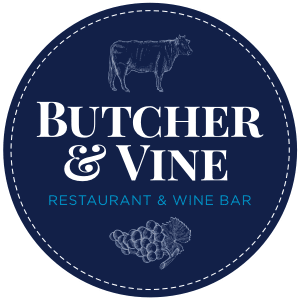A Butcher’s Guide – Your Crash Course to Understanding Steak
A Butcher’s Guide
Your Crash Course to Understanding Steak
To the inexperienced eye, the abundance of steak cuts can be overwhelming. They differ in taste, texture and name! After all, what exactly does a marble rating mean? Which is the most tender? And what to order? So many questions! With a variety delicious cuts on our menu, how do you choose what’s right for your taste buds?
From Galloway and Wagyu, to eye fillet or scotch fillet, we’re here to make your experience easy and delicious. Whether you’re dining in or purchasing a premium cut to take home and cook, we’ll tell you everything you need to know about the not-so-humble steak in this series of informative blogs. Let’s begin with Galloway Beef and Wagyu. Both feature on our menu so let’s learn a little more about them.
What is Galloway Beef and Why is Grass-Fed so Superior?
Galloway features heavily on our menu and is a type of Scottish cattle, renowned for their marbled meat. Our Galloway beef is sourced from the best grass-fed regions. When raised on a purely grass-fed diet, their flavour is far superior to cattle that graze solely on grain. Grass-fed helps produce natural fats, vitamins and omega 3 and 6; all of which contribute to a delicious steak on the plate! Our steaks are not only delicious but are gluten, dairy, antibiotic and GMO free. Therefore, when you think of grass-fed, think of it as the most natural and organic foundation from the pasture for enhanced flavour.
What is Wagyu Beef and Why is it So Special?
Synonymous with luxury on the plate, Wagyu beef is something truly special. And we serve only the best.
Firstly, Wagyu is a specific type of Japanese cow. There are actually four native breeds but only one that is special. The Wagyu. Not just any type of cow, these beasts are genetically unique and bred for premium consumption. Secondly, the distinctive beef of a Wagyu cow is highly marbled, containing a much higher level of fatty acids than other types of beef. Wagyu cattle houses the fat internally so that it seamlessly integrates with the muscle which equals to a melt-in-your-mouth steak experience.
Wagyu cows are living their best lives and enjoy a Zen-like existence. It’s imperative their stress levels are low so contrary to popular belief, they are not force fed nor have limited movement, but in fact live peaceful lives while carefully monitored. Consequently, Wagyu beef is some of the finest in the world and something we are honoured to serve. Our full-bodied Wagyu is proudly bred and farmed in King Valley, Victoria – home of some of the finest produce in the land.
The cattle are grass-fed and are also part of a customised grain-fed program. This special mix of Australian grains and cereals delivers unparalleled and consistently marbled steaks from the farm to your plate. Plus, all are gluten, dairy, antibiotic and GMO free.
What Does a Marbled Score Australia (MSA) Mean?
Now you understand Wagyu, Galloway and the importance of grass-fed cows, what about marbling? What exactly does it mean and why is it so important?
Essentially, it is a beef quality grading system. It assesses the quantity and quality of the marbling and the higher the score, the higher the quality.
Marbling adds flavour to the meat and is characterised by the white flecks you see in the flesh. This intermuscular fat gives the appearance of marble, hence the name. It is quite literal! Simply put, marbling is the amount of fat that runs along or within the specific cut of meat.
In Australia, marbled steak is rated via an MSA rating. This score is a guarantee of favour, juiciness and tenderness, with the higher the grade, the greater the eating quality. The rating scales from 0-9, with Butcher & Vine serving produce with an impressive grade 8+ marbling score for Wagyu. Galloway beef is MSA certified at 3+, which means a premium grade high marbled content. Perfect!
